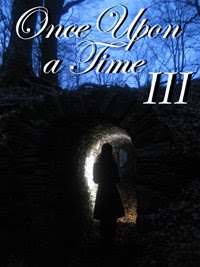
The wonderful Persephone Books celebrated their tenth birthday during my birthday month, March, and I thought it would be apt to pay them birthday wishes upon my own birthday.
It is rather apt to celebrate it today as sitting beside me is a copy of one of the Persephone published texts, The Making of a Marchioness by Frances Hodgson Burnett (much loved children's author of The Secret Garden, A Little Princess and Little Lord Fauntleroy and another Persephone title, The Shuttle, which I read at Christmas and adored), which arrived in a parcel today. Sent from one of the LibraryThing Persephone group members, it isn't a Persephone edition but the title is one I have been longing to read since first discovering Persephone Books last May and for the last few months it has been reprinting. I am looking forward to reading it, plan to immediately, in fact, and then later upgrade it to a Persephone edition.
Here is a synopsis from the Persephone website:
Little Lord Fauntleroy (1886) and The Secret Garden (1911) are enduring bestsellers, but this 1901 novel is many people's favourite: Nancy Mitford and Marghanita Laski loved it, and some US college courses teach it alongside Pride and Prejudice and Jane Eyre.
Part I, the original Marchioness, is in the Cinderella (and Miss Pettigrew) tradition, while Part II, called The Methods of Lady Walderhurst, is an absorbing melodrama; most novels end 'and they lived happily ever after' but this one develops into a realistic commentary on late-Victorian marriage. 'Delightful... A sparky sense of humour combined with lively social commentary make this a joy to read' wrote the Bookseller. Kate Saunders told Open Book listeners that she was up until two in the morning finishing this 'wildly romantic tale whose hero and heroine are totally unromantic' (Daily Telegraph); the Guardian referred to 'a touch of Edith Wharton's stern unsentimentality'; the Spectator wrote about the novel's 'singular charm'; and the Daily Mail stressed the 'sharp observations in this charming tale.'
It sounds truly wonderful, does it not? The edition sent to me is only part one so hopefully Persephone's reprinting of this title is completed soon!
Speaking of non-Persephone editions: I was home in Glasgow for a long weekend and when I returned to London on Monday I brought some of my books back with me including an old Penguin copy of Virginia Woolf's Flush, which Persephone have also reprinted. Things as they are in the particular economic climate and my own personal circumstances I am attempting to curb my book spending yet indulge in reading Persephone titles where I can. I also own an old, second-hand copy of Persephone #61 A London Child of the 1870s by Molly Hughes.
I know I rave on and on about this lovely publishing house, so much so that one would suspect that I was on the payroll (oh if only that were true!) but they truly are beautifully presented books (that make ideal presents) and are charming, engaging and highly readable books. I would urge you to visit their shops (the flagship one in Bloomsbury or the newer and very quaint one in South Kensington) when in London or to subscribe to their mailing list and catalogue, which is a pleasure in itself. They publish forgotten masterpieces: books that have been overlooked and fallen out of print; not just charming and enchanting novels but cookery books, social commentary, journals, letters, essays and short stories. This article contains photographs of the shop on Lamb's Conduit Street that do its charm justice. Persephone Books are the whole package and I wish them many, many happy returns and success in the future.















